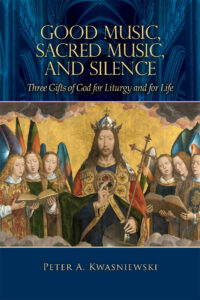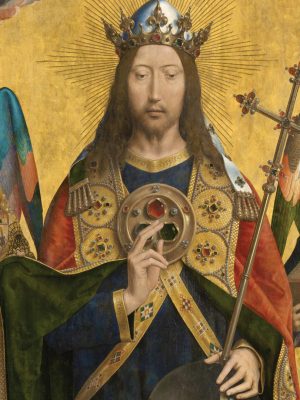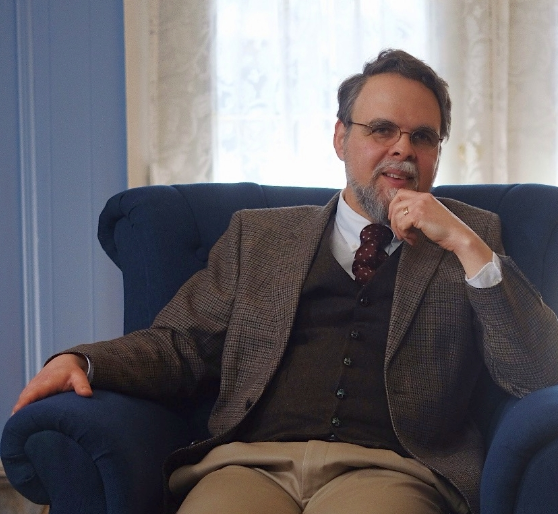The most common argument I’ve heard over the years for why we should allow Christian “pop” music in Church is the consequentialist or utilitarian argument: “Look how well it works. It gets people to Mass and keeps the youth involved.” Interestingly, I’ve never heard a Catholic try to defend the folksy or pop-style music on purely artistic or liturgical grounds, and only rarely have I seen Protestants try to do that. The baseline for the entire discussion seems to be a rough-and-ready pragmatism.
The problem with this argument is twofold. First, even on a practical level, it’s not really true, or very unevenly so. The number of Catholics attending Mass is in steady decline and has been for decades, especially in the category of young people. The music we have cobbled together after the Council just doesn’t seem to be so appealing, broadly speaking, that it can staunch the bleeding or turn the tide. It seems to put off at least as many people as the number it may appeal to.
Second, and more importantly, a popular style of music, complete with guitars and pianos and that unmistakable rock-ballad or easy listening feel, is not at all compatible with the Church’s understanding of the Mass as a true and proper sacrifice offered to God. Let’s admit (for the sake of argument) that we could pack a building full of people by using that kind of music. Would this music be able to convey to the worshipers what the Mass actually is, how they should be disposed to it, and how they should think of what they are doing? Or would it subtly or openly inculcate a different doctrine that would eventually result in heterodoxy?
It must be recalled that the issues we are dealing with today are by no means peculiar to our time but arise in one form or another during any period of history in which secular music exercises an undue influence on the music of the Church. Pope Pius XII’s encyclical on the sacred liturgy Mediator Dei—a major source for Sacrosanctum Concilium—offers us luminous insights on the topic at hand.
- 47. The entire liturgy, therefore, has the Catholic faith for its content, inasmuch as it bears public witness to the faith of the Church.
Note well: the entire liturgy has the Catholic faith for its content. This entirety, then, includes the music of the liturgy, in both its words and its strictly musical attributes. Pius XII is saying that the texts, melodies, rhythms, all of these should bear public witness to the Church’s faith. It comes as no surprise that Pius X, Pius XI, Pius XII, Vatican II, John Paul II, and Benedict XVI pointed to Gregorian chant and polyphony as pinnacles of this public witness, and underlined the need for new compositions to imitate the spirit of these exemplars.
- 68. The august sacrifice of the altar, then, is no mere empty commemoration of the passion and death of Jesus Christ, but a true and proper act of sacrifice, whereby the High Priest by an unbloody immolation offers Himself a most acceptable victim to the Eternal Father, as He did upon the cross. “It is one and the same victim; the same person now offers it by the ministry of His priests, who then offered Himself on the cross, the manner of offering alone being different” (Council of Trent).
The Mass is not a social gathering with a humanitarian aim, it is not even a symbolic drama in which we play-act the death of Jesus. It is a true and proper sacrifice, the unbloody re-presentation of the sacrifice of Calvary. Our Lord Jesus Christ’s once-for-all immolation on the Cross is made present and active for us sinners, who would otherwise be lost forever. He comes to be present in this awe-filled, world-changing, life-shaking, heavenrending sacrifice. For our part, do we appreciate what is happening on the altar? Do our actions, attitudes, responses, artistic expressions, accurately convey our interior awareness of this great mystery, before which we should fall in self-abnegation, profound humility, trembling adoration? Or does the music (for example) lead us to feel, think, and act as if this mystery and miracle were not taking place?
- 152. While the sacred liturgy calls to mind the mysteries of Jesus Christ, it strives to make all believers take their part in them so that the divine Head of the mystical Body may live in all the members with the fullness of His holiness. Let the souls of Christians be like altars on each one of which a different phase of the sacrifice, offered by the High Priest, comes to life again, as it were: pains and tears which wipe away and expiate sin; supplication to God which pierces heaven; dedication and even immolation of oneself made promptly, generously, and earnestly; and, finally, that intimate union by which we commit ourselves and all we have to God, in whom we find our rest. “The perfection of religion is to imitate whom you adore” (St. Augustine).
This article is taken from a chapter in Good Music, Sacred Music, and Silence by Dr. Peter Kwasniewski which is available from TAN Books.







